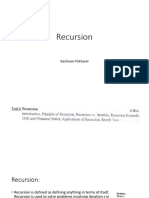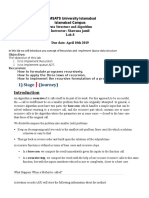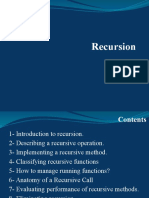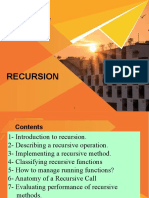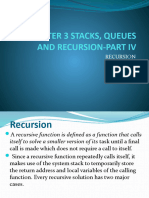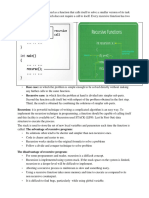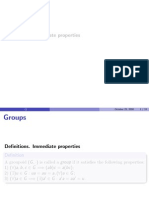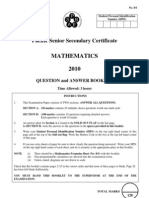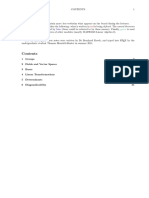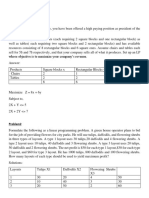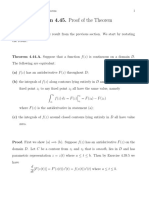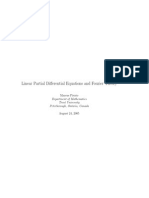0% found this document useful (0 votes)
1K views16 pagesRecursion in C, C++
Recursion is when a function calls itself. It is commonly used to break down problems into subproblems, like calculating factorials or moving disks in the Towers of Hanoi puzzle. Recursive functions work by suspending the caller, starting the called function, and returning control back to the caller upon completion. While recursion can elegantly solve certain problems, iterative solutions are often more efficient due to the overhead of function calls. Tail recursion is a special case where the recursive call is the last operation, allowing it to be optimized as a loop.
Uploaded by
sabarisriCopyright
© Attribution Non-Commercial (BY-NC)
We take content rights seriously. If you suspect this is your content, claim it here.
Available Formats
Download as PDF, TXT or read online on Scribd
0% found this document useful (0 votes)
1K views16 pagesRecursion in C, C++
Recursion is when a function calls itself. It is commonly used to break down problems into subproblems, like calculating factorials or moving disks in the Towers of Hanoi puzzle. Recursive functions work by suspending the caller, starting the called function, and returning control back to the caller upon completion. While recursion can elegantly solve certain problems, iterative solutions are often more efficient due to the overhead of function calls. Tail recursion is a special case where the recursive call is the last operation, allowing it to be optimized as a loop.
Uploaded by
sabarisriCopyright
© Attribution Non-Commercial (BY-NC)
We take content rights seriously. If you suspect this is your content, claim it here.
Available Formats
Download as PDF, TXT or read online on Scribd
/ 16
